The Central Plains Experimental Range, adjacent to the Pawnee National Grasslands, is a beautiful locale in northeast Colorado where an intact prairie landscape still exists. This summer, I had the fortune of spending many days on the range, collecting data for my master’s degree in integrative biology from the University of Colorado-Denver.

The shortgrass prairie of northeast Colorado is a scenic place, home to a diversity of grasslands birds. Photo by Angela Dwyer.
This was the first of a two-year project to monitor Thick-billed Longspur nests during the first two years of an adaptive grazing management experimental study. I am exploring how grazing practices impact nest success of Thick-billed Longspur, a species in decline on the shortgrass prairie, to aid ranchers in raising beef with minimal impact on the ecosystem and grasslands birds, without impeding their bottom line.
Studying grassland birds during the breeding season, however, was not easy. Locating ground-nesting birds in vast grasslands can be tricky and labor intensive. With the help of assistants, crews from USGS and USDA, and dedicated volunteers, I used a rope-dragging method to flush adults off the nests so we could locate them and monitor nest productivity. It was truly a monumental task. Walking 5-7 miles per day dragging 100-foot ropes across the prairie was taxing on all of us. The first week involved a lot of trial and error, but we soon got a system down.

The author, left, and helpers drag a rope across the prairie to flush adult birds from their nests. Photo by Angela Dwyer.
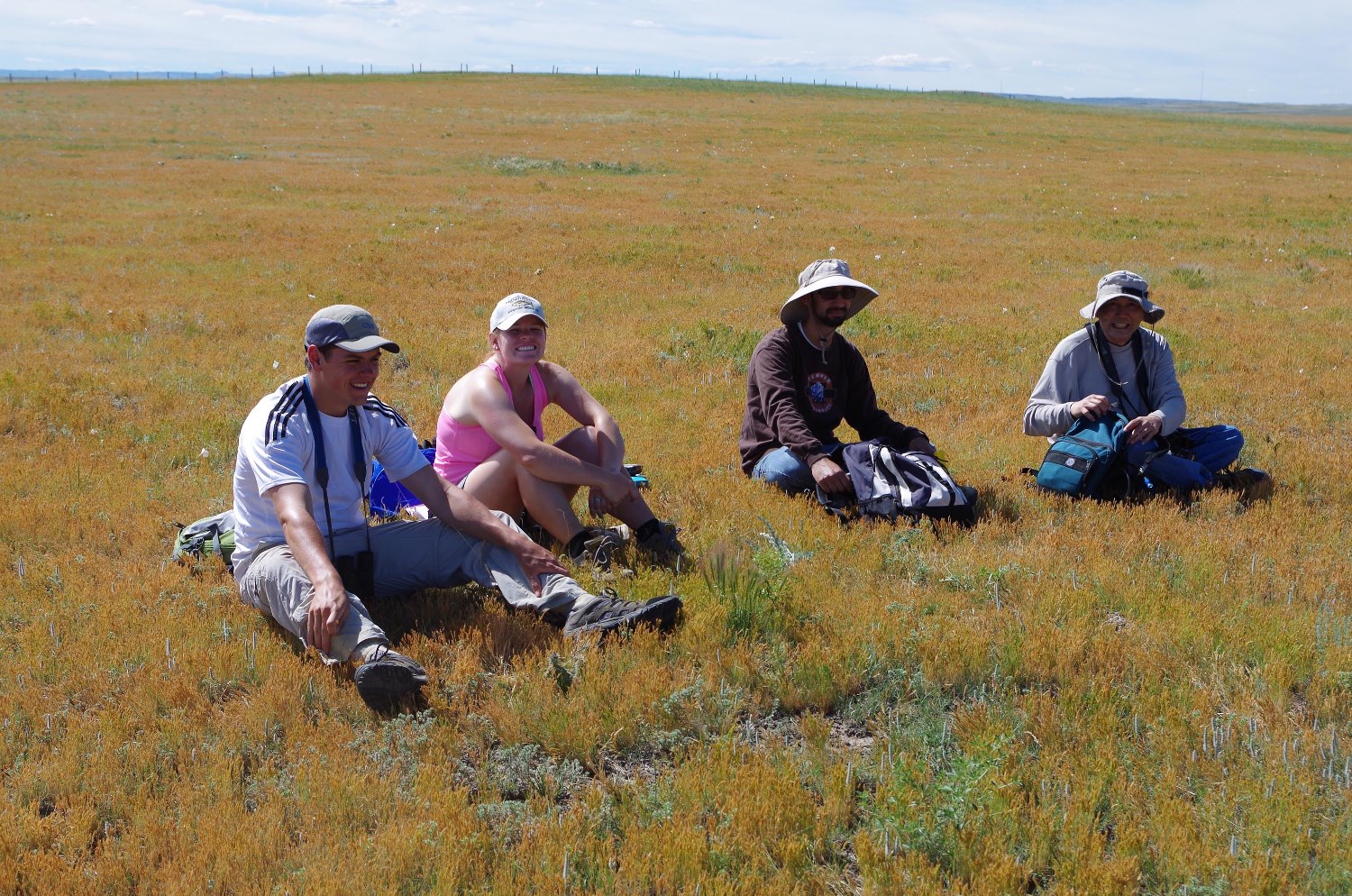
The crew takes a break … dragging rope is tough work! Photo by the author.
All of this hard work, however, paid off. We ended up locating and monitoring 27 Thick-billed Longspur nests at the study site from May 19 to mid-July, 2014, along with nests of four other species. To gather data on additional birds, we also found and monitored one Brewer’s Sparrow nest, 33 Horned Lark nests, one Common Nighthawk nest and 262 Lark Bunting nests from May 19 to mid-July. It truly was an abundant summer for Lark Buntings on the Central Plains Experimental Range!
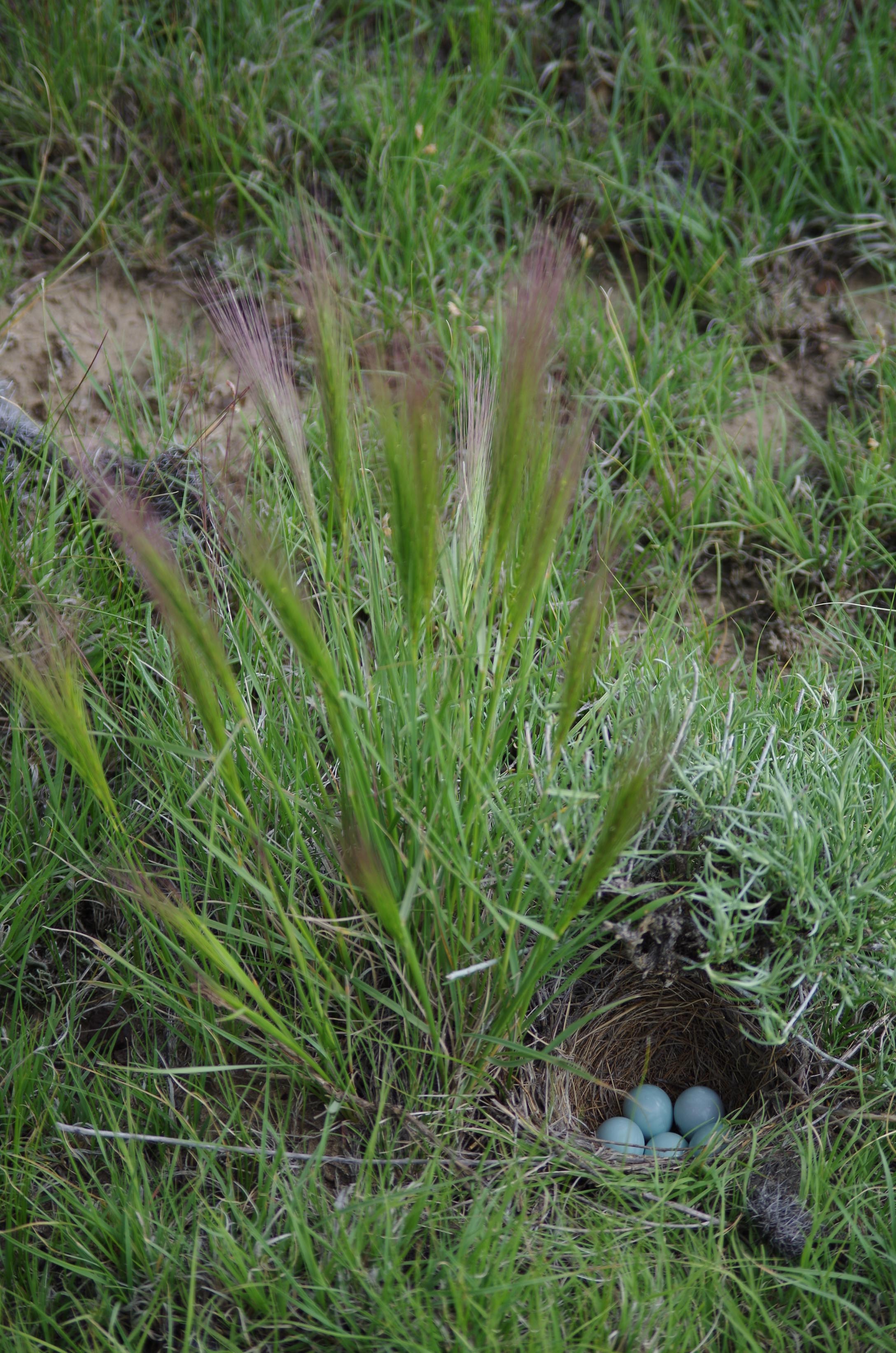
A Lark Bunting nest is nestled among the prairie grasses on the Central Plains Experimental Range. Photo by the author.
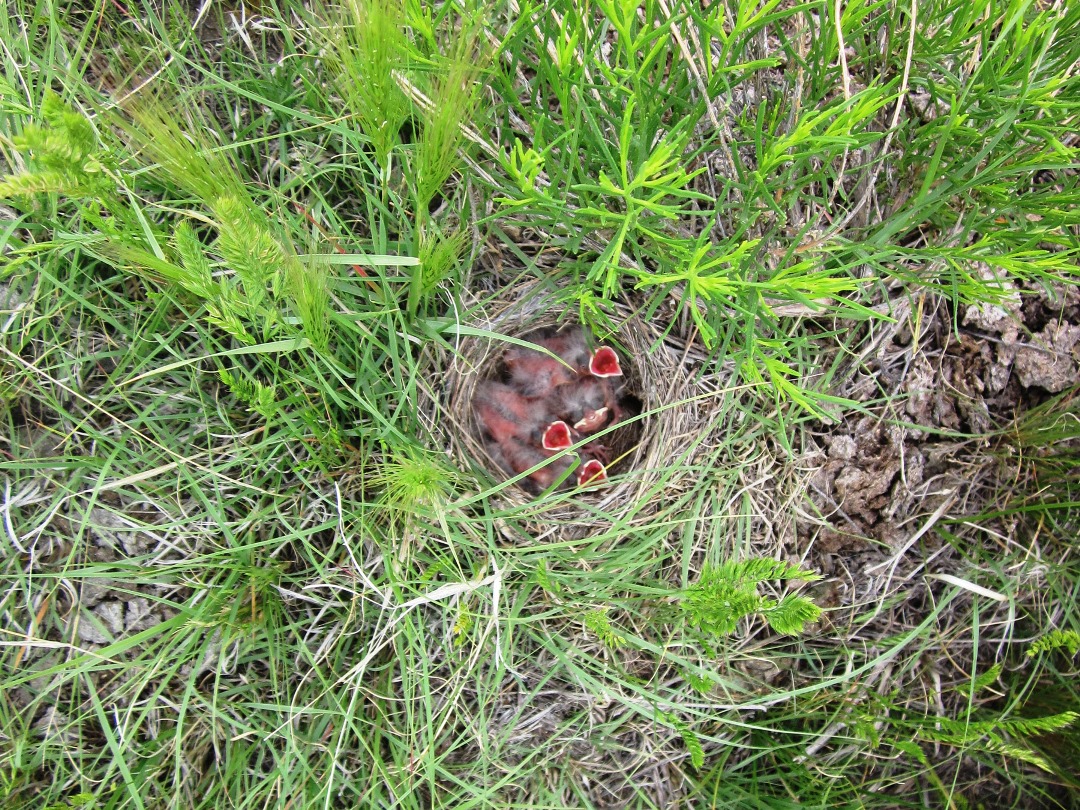
Lark Bunting chicks are seen in a nest on the shortgrass prairie. Photo by the author.
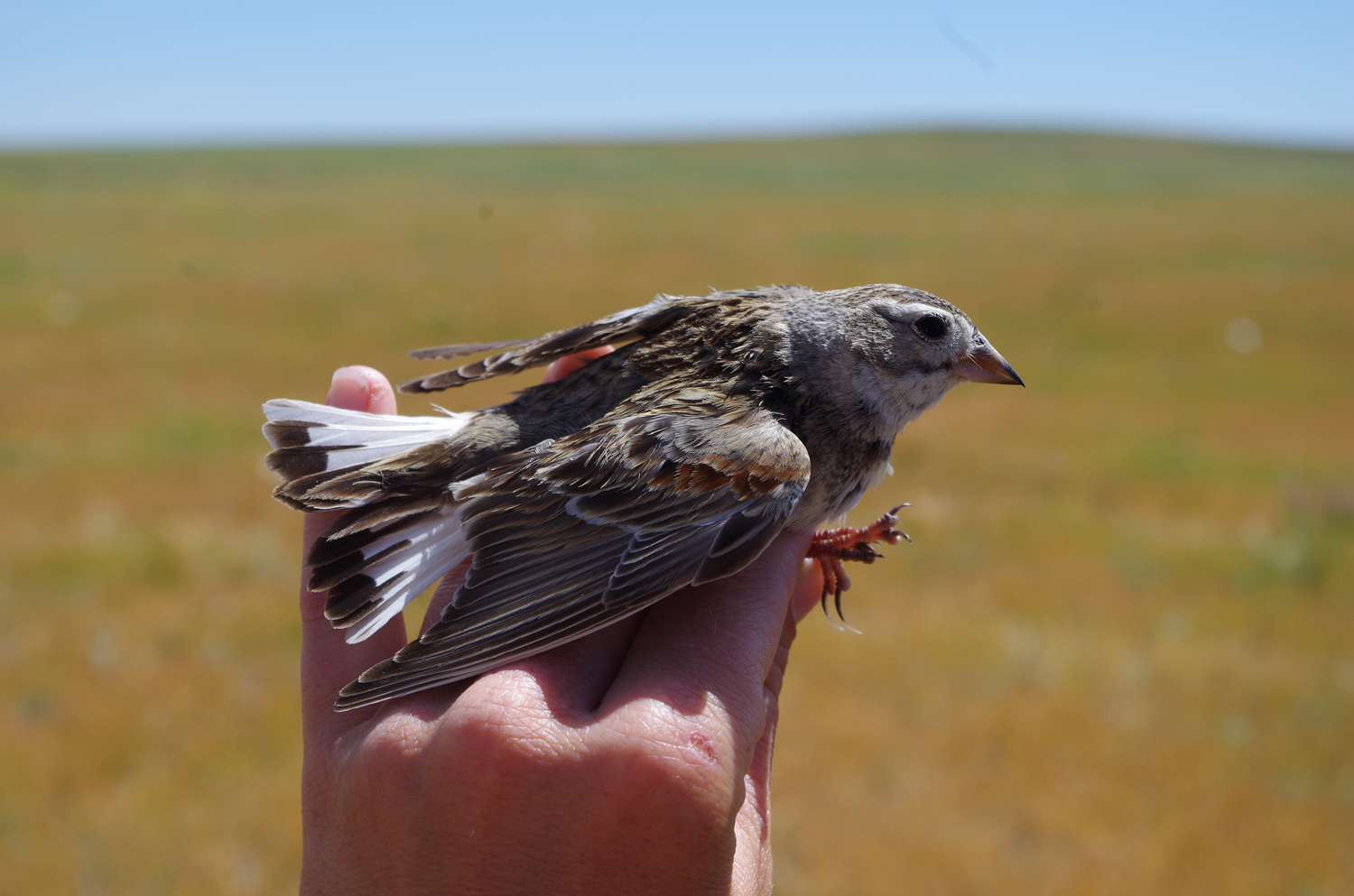
The author holds an adult Thick-billed Longspur. While this species was the target of the author’s research, she monitored nests of other grassland birds during the study period. Photo by the author.
Predation was the most common cause of nest failure across species, likely from small mammals or snakes, but one hailstorm knocked out 75 of 113 nests that we were monitoring at the time. This was a particularly painful day for the crew, finding so many lost nests, including a few incubating adults that stayed on their nests to protect them during the storm but didn’t make it. No nests were lost to cattle trampling. In fact, I found the cattle to be pretty amusing. Most were so used to people that they would follow us around as we were checking on nests. We tried to give them a wide berth, but they sometimes had their own ideas!
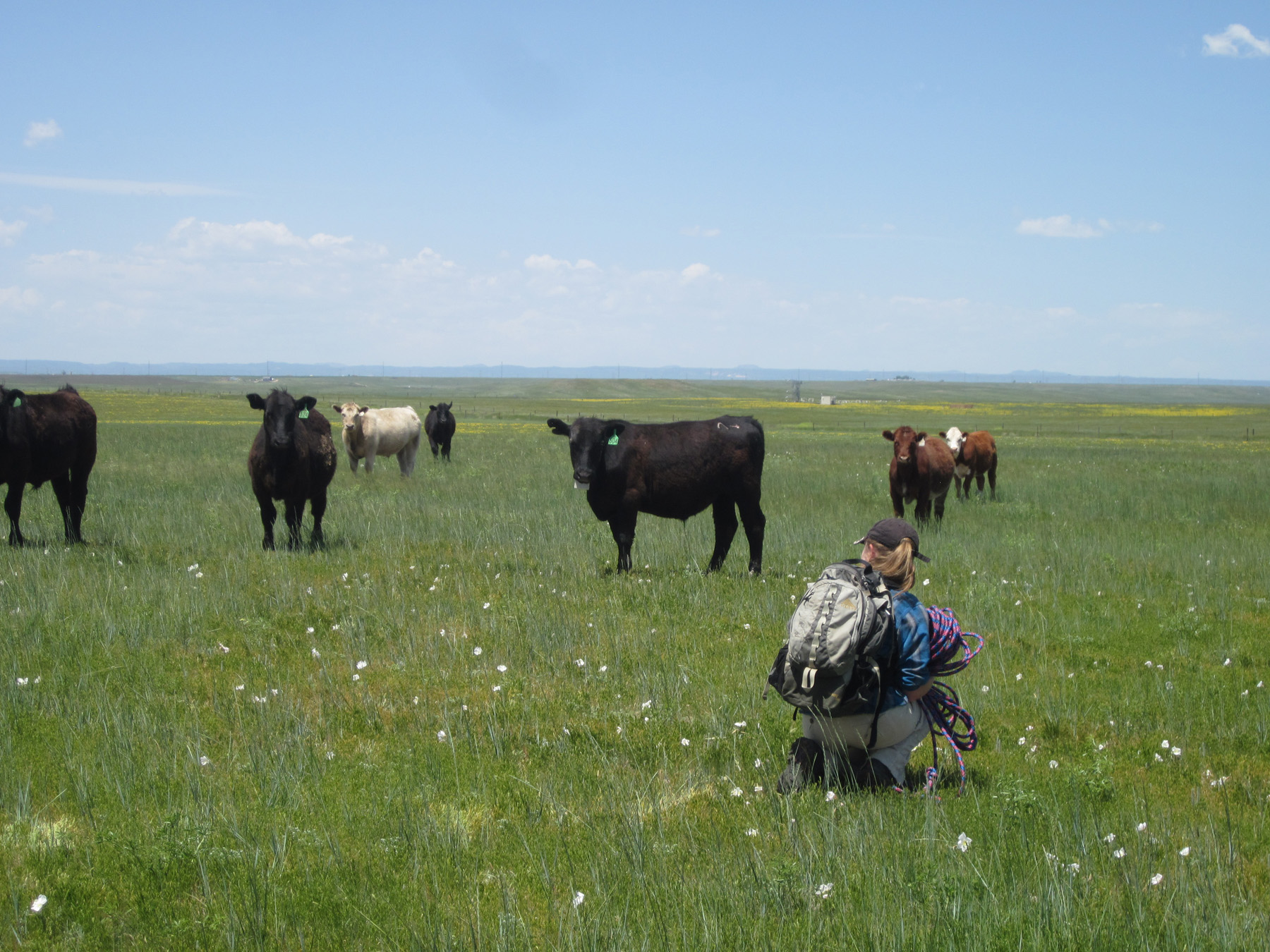
The author checks a nest while cattle crowd around her. Photo by Angela Dwyer.
With a season’s worth of data, I’m looking forward to exploring how Thick-billed Longspurs and other grassland birds respond to the grazing regimes on the shortgrass prairie. My plan for next year is to continue monitoring the nests of a variety of species, to find out whether they respond in different ways or whether grazing regimes have a blanket effect on ground-nesting birds.
Thank you to the assistants, volunteers and other helpers for assisting with the study; Denver Field Ornithologists, Colorado Field Ornithologists and the U.S. Fish and Wildlife Service for funding my project; and my project advisers, Drs. Mike Wunder and Diana Tomback of CU-Denver, Angela Dwyer of RMBO, David Augustine of the USDA at the Central Plains Experimental Range and Susan Skagen of the USGS, for helping me carry out my research. I’m looking forward to getting back in the field in 2015!
~ Amber Carver, Master’s Student at University of Colorado-Denver


